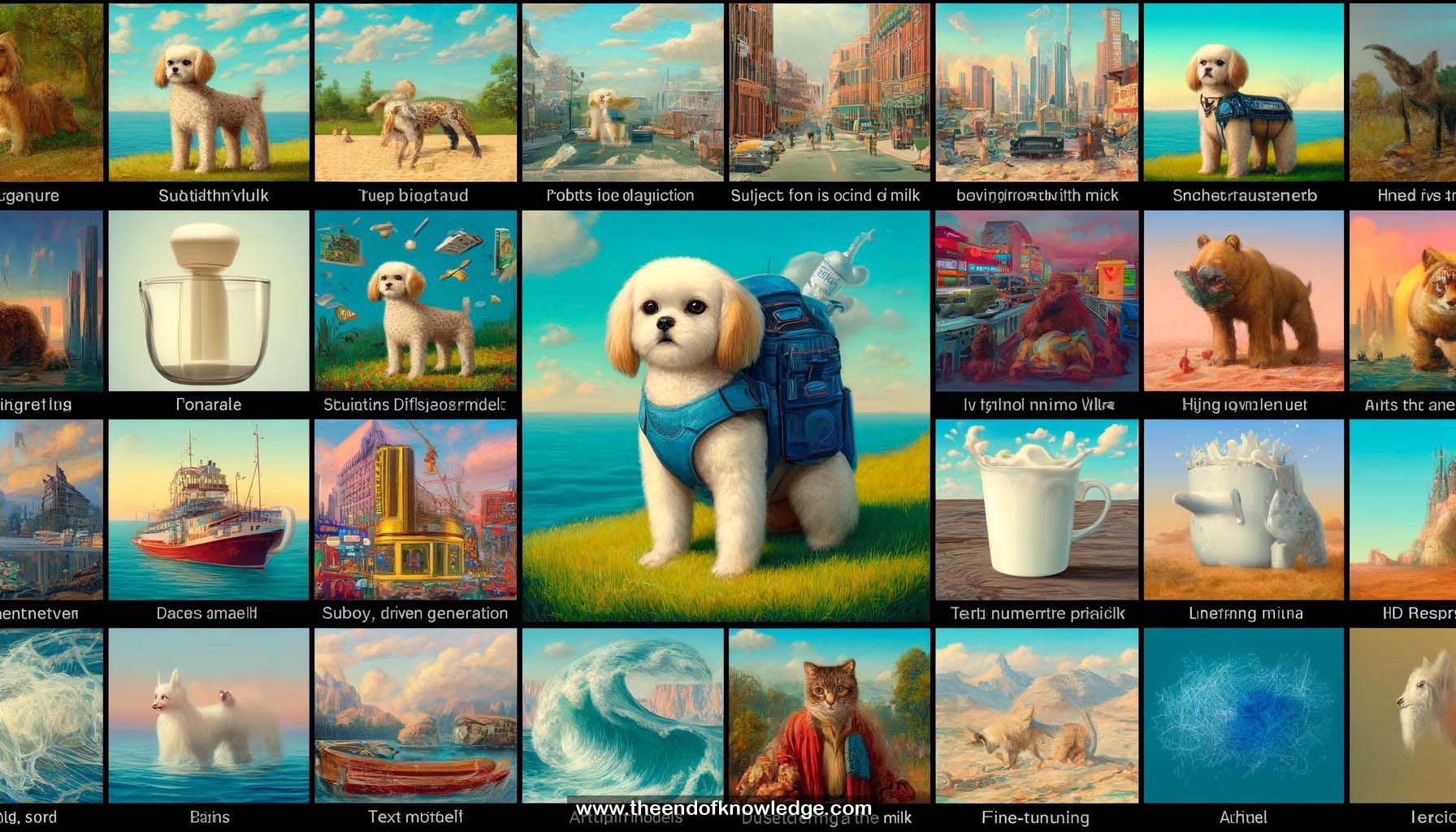 >
>
Concept Graph & Resume using Claude 3 Opus | Chat GPT4o | Llama 3:
Resume:
1.- Dreambooth: Fine-tuning text-to-image diffusion models for subject-driven generation using a small set of subject images.
2.- Subject-driven generation: Generating new images of a unique subject in different contexts while preserving subject details.
3.- Recontextualization: Generating images of a subject in unseen contexts and locations.
4.- Artistic renditions: Creating images of a subject in different artistic styles.
5.- Property modification: Generating hybrids between the subject and other objects or species.
6.- Accessorization: Dressing up a subject in different costumes or accessories.
7.- Comic generation: Creating comics with a consistent character generated by a diffusion model.
8.- Subject fidelity evaluation: Assessing the similarity of generated images to the original subject while ignoring distractors.
9.- Dreambooth dataset: The largest dataset for subject-driven generation, containing 30 subjects with variations in pose, articulation, and lighting.
10.- Textual Inversion: Concurrent work that encodes concepts into text embeddings using few-shot optimization.
11.- User studies: Conducted to compare Dreambooth and Textual Inversion for subject and prompt fidelity.
12.- CLIP image similarity: Cosine similarity between CLIP embeddings of images, used for evaluating subject fidelity.
13.- DINO cosine similarity: An alternative metric for evaluating subject fidelity, performing better than CLIP similarity.
14.- Dreambooth on Imagen: Achieves the best results for both subject fidelity and prompt fidelity.
15.- Dreambooth on Stable Diffusion: A close second place in performance.
16.- AI selfies: Generating self-portraits with semantic and stylistic modifications using Dreambooth.
17.- Rare identifier: A unique identifier used to denote the subject during fine-tuning.
18.- Prior preservation loss: Prevents language drift by concurrently fine-tuning the model with generated images of the subject's class.
19.- Super-resolution module fine-tuning: Helps capture subject details in modern diffusion model architectures.
20.- Language drift: A phenomenon where the model forgets the meaning of a word and attaches it to a specific subject.
21.- Dreambooth prompts: A set of 25 prompts provided with the dataset to guide image generation.
22.- Dreambooth model size: Larger than Textual Inversion embeddings but allows for capturing fine-grained subject details.
23.- Community enthusiasm: Dreambooth inspired new explorations and applications pursued by the community.
24.- Photo-realistic portrait generation: Dreambooth allowed for generating high-quality photo-realistic images of people early on.
25.- Unconstrained input images: Dreambooth can work with a small set of unconstrained subject images.
26.- Diffusion denoising loss: Used for fine-tuning the pre-trained text-to-image model.
27.- Early stopping: Helps conserve the model prior and allows for semantic modification using text prompts.
28.- Cascaded diffusion models: Fine-tuning super-resolution modules in cascaded architectures helps capture subject details.
29.- Evaluation challenges: Evaluating subject fidelity is a hard and unsolved problem.
30.- Dreambooth impact: The method surprised and humbled the authors with the community's creativity and response.
Knowledge Vault built byDavid Vivancos 2024